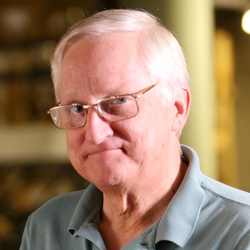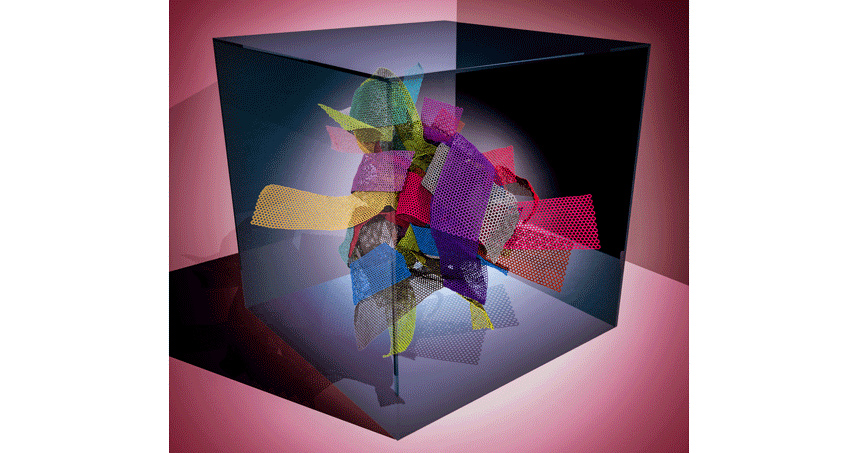Materials Design Center Receives $25 Million Grant
Northwestern-hosted Center for Hierarchical Materials Design establishes Chicago as a hub for materials innovation
After spending the past five years solidifying Chicago as a hub for high-tech materials innovation, the second phase of the Chicago-based Center for Hierarchical Materials Design (CHiMaD) has been selected for funding.
The National Institute of Standards and Technology (NIST) granted the multi-institutional, Chicago-based center an additional $25 million over the next five years.
CHiMaD is hosted by Northwestern University, with partners that include the University of Chicago, Argonne National Laboratory, QuesTek Innovations, and ASM Materials Education Foundation. NIST is also a major collaborator with more than 50 investigators involved in CHiMaD research.

CHiMaD’s mission is to develop a new generation of computational tools, databases, and experimental techniques that will enable the design of novel materials to address major societal challenges. The center is also transferring these tools and techniques to industry as well as training the next generation of materials innovators.
“CHiMaD’s central goal is to realize the promise of the Materials Genome Initiative,” said Peter Voorhees, Northwestern Engineering's Frank C. Engelhart Professor of Materials Science and Engineering and one of the center’s three co-directors. “We are designing new materials, ranging from polymers for nanoelectronics to high-temperature metal alloys with the aim to facilitate a faster industrial design cycle of these materials while lowering manufacturing costs. We will also continue to enhance one of the world’s largest public domain collections of materials data that is at the core of our materials design effort."
Gregory B. Olson, Walter P. Murphy Professor of Materials Science and Engineering at Northwestern Engineering and co-director for the center, said: “Building on the Materials Genome infrastructure established in our first five years, we look forward to demonstrating a general methodology of computational materials design by applying our fundamental databases to the creation of novel, high-performance materials for applications ranging from electronics to space travel.”
 “CHiMaD brings together the intellectual heft of two major universities in the area of materials design innovation — a national laboratory with deep expertise in materials and advanced computing, a startup company at the forefront of computational materials design, and the processing, characterization, and development prowess of NIST,” said Juan de Pablo, the Liew Family Professor in Molecular Engineering and the Vice President for National Laboratories at the University of Chicago and co-director for the center. He continued, “By forming meaningful partnerships with leading companies that rely on fast design cycles to bring products to market at an accelerated pace, CHiMaD has established itself as a national and international thought center for materials innovation at the forefront of technology. The next phase of CHiMaD promises to result in exciting new discoveries that will rapidly find their way into products.”
“CHiMaD brings together the intellectual heft of two major universities in the area of materials design innovation — a national laboratory with deep expertise in materials and advanced computing, a startup company at the forefront of computational materials design, and the processing, characterization, and development prowess of NIST,” said Juan de Pablo, the Liew Family Professor in Molecular Engineering and the Vice President for National Laboratories at the University of Chicago and co-director for the center. He continued, “By forming meaningful partnerships with leading companies that rely on fast design cycles to bring products to market at an accelerated pace, CHiMaD has established itself as a national and international thought center for materials innovation at the forefront of technology. The next phase of CHiMaD promises to result in exciting new discoveries that will rapidly find their way into products.”
Designing materials employs physical theory, advanced computer models, vast materials properties databases, and complex computations to accelerate the design of a new material with specific properties for a particular application. Since it launched in 2014, nearly 300 CHiMaD and NIST investigators have developed new materials for batteries, precision nanofabrication, electronics, inks for 3D printing, structures to withstand extreme environments, and more.
CHiMaD specifically focuses on the creation of novel “hierarchical materials,” which exploit distinct structural details at various scales — from the atomic on up — to achieve special, enhanced properties. An example in nature of a hierarchical material is bone, a composite of mineral and protein at the molecular level assembled into microscopic fibrils that in turn are assembled into hollow fibers and on up to the highly complex material that is “bone.”
CHiMaD works to advance the national Materials Genome Initiative, which aims to accelerate the pace of new materials discovery by combining theoretical, computational, and experimental science. Techniques for designing materials have the potential to revolutionize the development of new advanced materials, which in turn have created whole industries. It’s estimated that the average time from laboratory discovery of a new material to its first commercial use can take up to 20 years. The Materials Genome Initiative aims to halve that.
